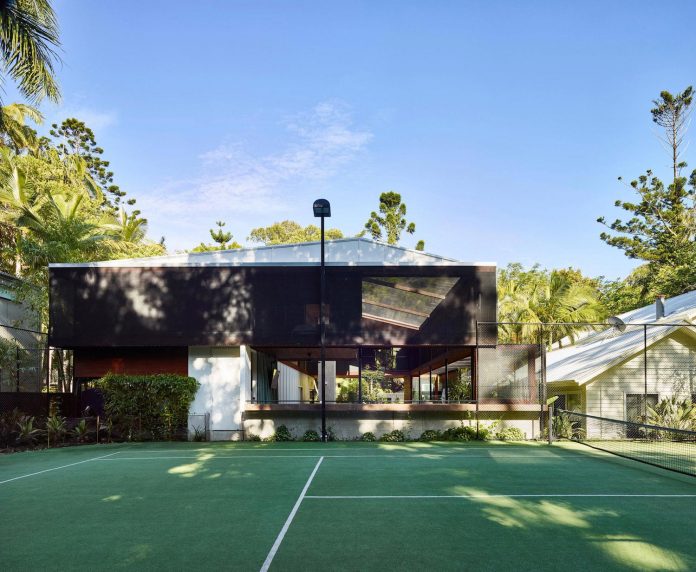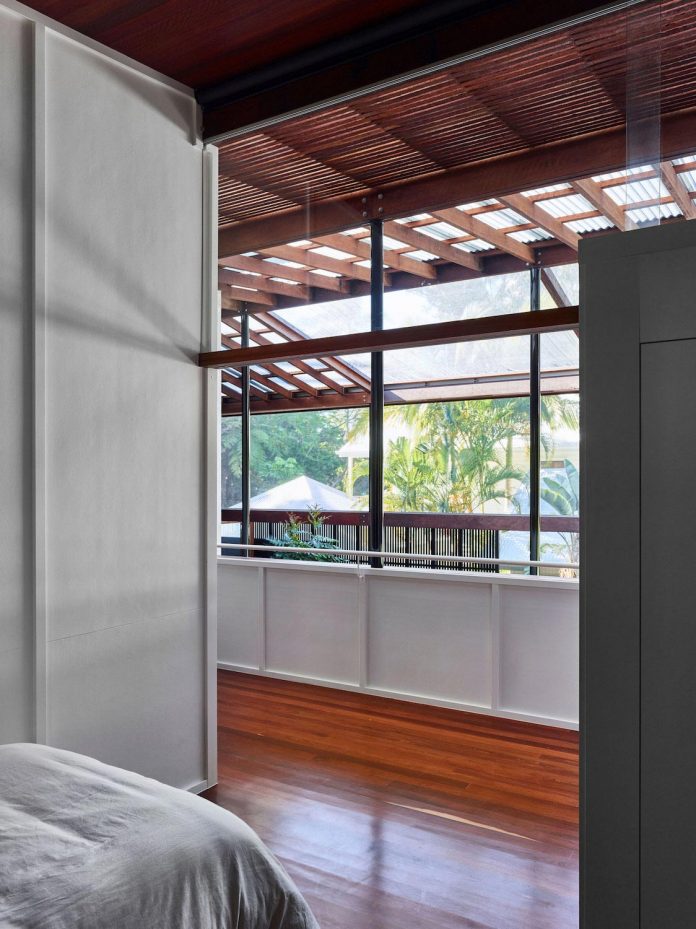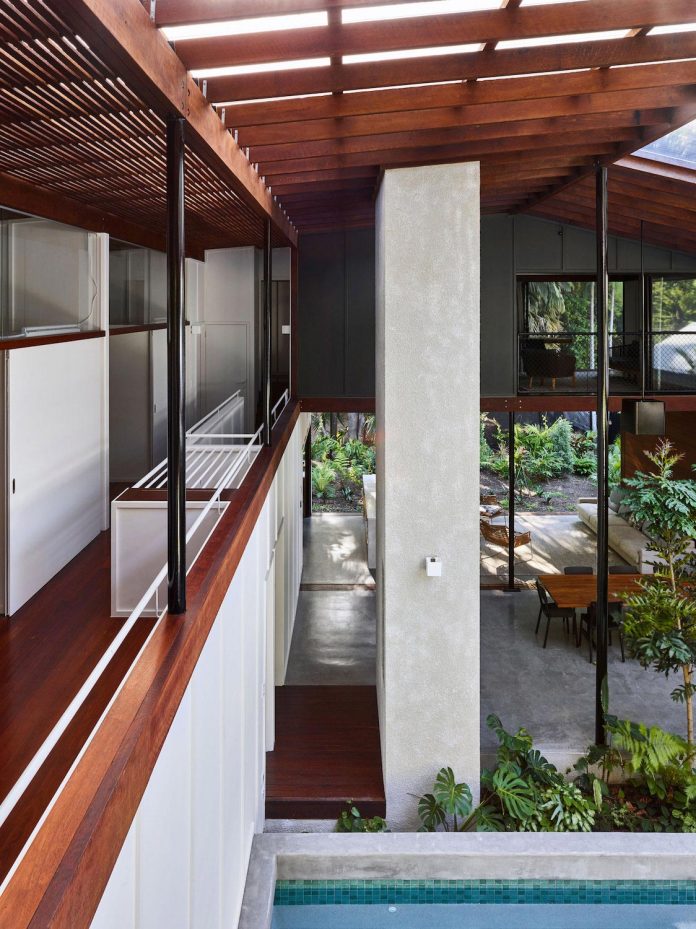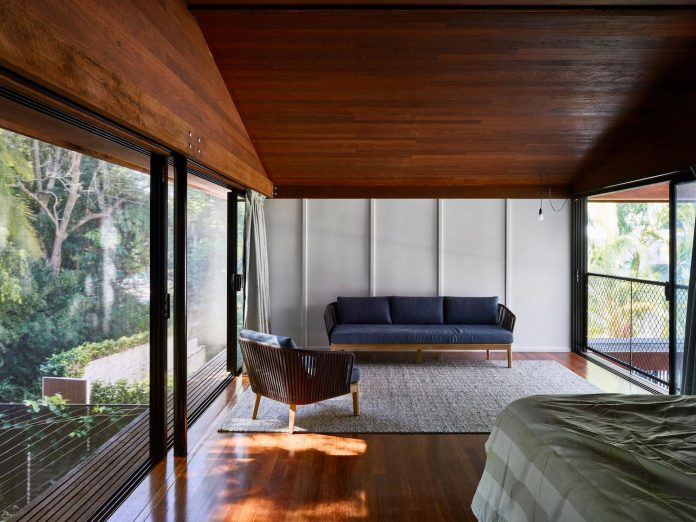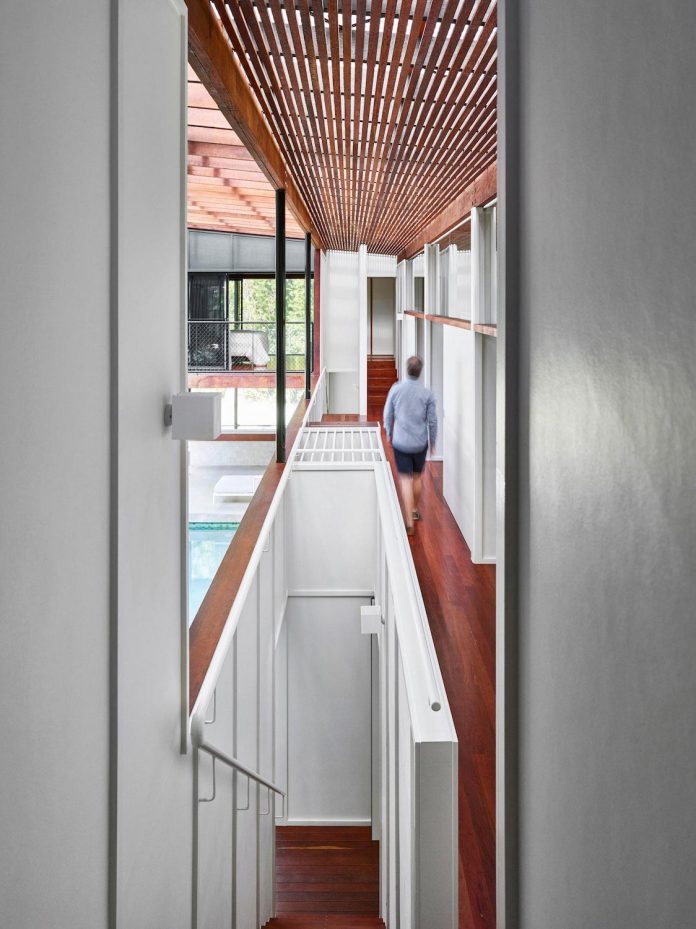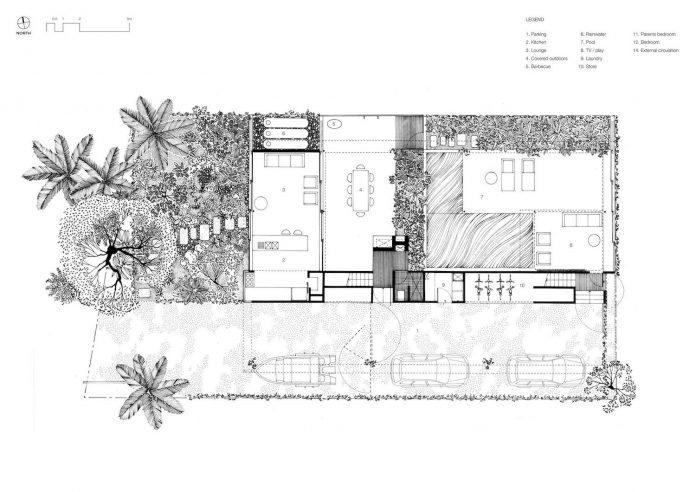House originally designed as a tensioned structure to wrap and protect the site and as a place for multiple families to gather
Architects: James Russell Architect
Location: Noosa Heads, Australia
Year: 2016
Area: 3.982 ft²/ 370 m²
Photo courtesy: Toby Scott
Description:
“Mitti Street House is situated in a low-lying area at the eastern edge of Little Cove bordering Noosa National Park. The house and courtyards are elevated slightly above natural ground to deal with flash flooding, which occurs with the monsoonal rains. It is lovely to experience the rain but mosquitoes can be fierce!
At its essence, the house is a large screened verandah in the rainforest making a place for Nigel to work or friends and family to stay. A home that is socially interactive within the family and to the broader community, a home that will cope with sun, rain, and flood for 50 to 100 years with little maintenance, a home that is comfortable all year without mechanical heating or cooling.
Living and entertaining spaces are on the ground, a series of modest pavilions or ‘fibro shacks’ of a sort, make camp around the edges of the central gathering space and pool. Cooking and bathing to an open sky.
The external face of the pavilions, courtyard, and verandah, both walls, and roof, are covered by shade cloth providing protection from sun, insects and neighboring houses creating a screened garden within the rainforest so one can strip off and enjoy balmy evenings in the forest.
Holidays for Nigel are shared with extended family and friends. The house is a place for multiple families to gather, share meals and sleep. Upstairs, two parents bedrooms sit at opposite ends with three bed or bunk rooms for kids and visitors sitting in between along the edge of the central verandah. Parents can borrow the rooms between as required; almost like shop fronts opening out to the central ground.
Mitti Street House was originally designed as a tensioned structure to wrap and protect the site. This was expensive and required more steel than we were comfortable using so close to the beach. Working with the engineer, and so as to manage cost and maintenance, the design evolved using concrete to make a ground plane for living and bathing, with modest hardwood timber and fibro shacks around and above.”
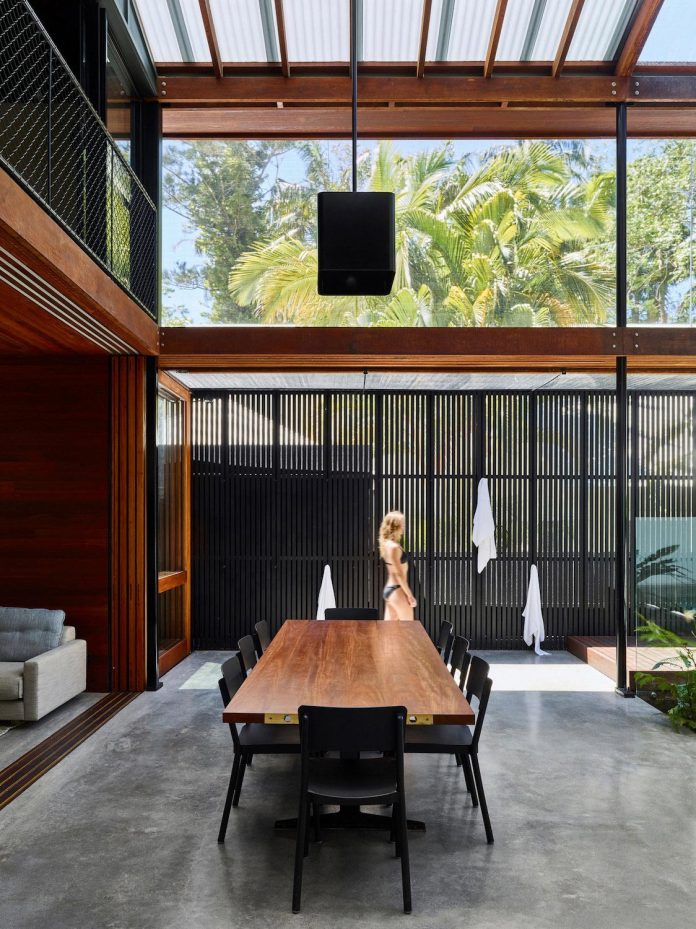
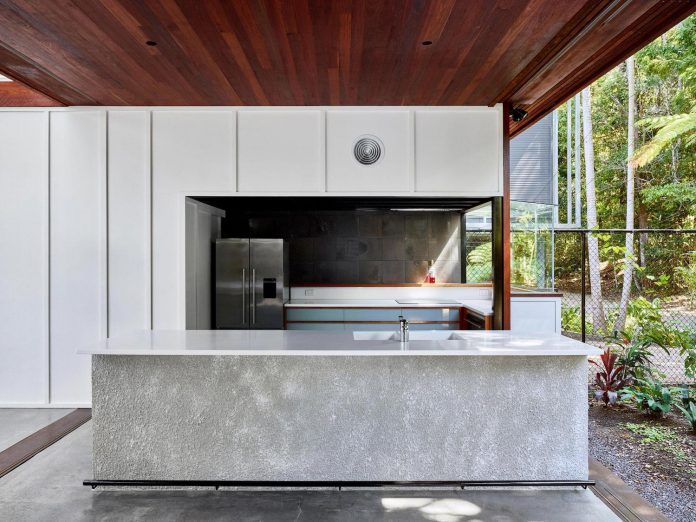
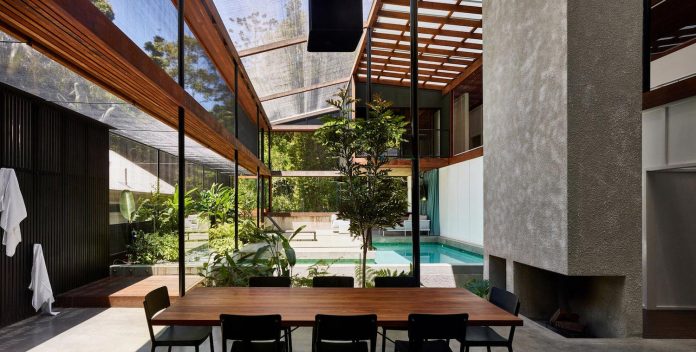
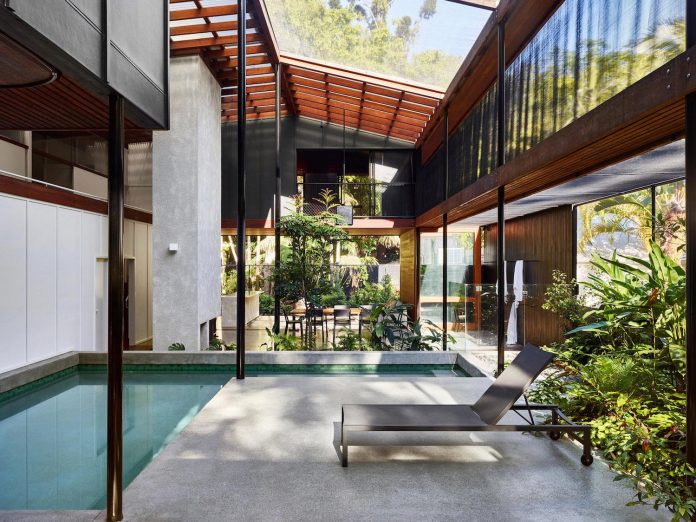
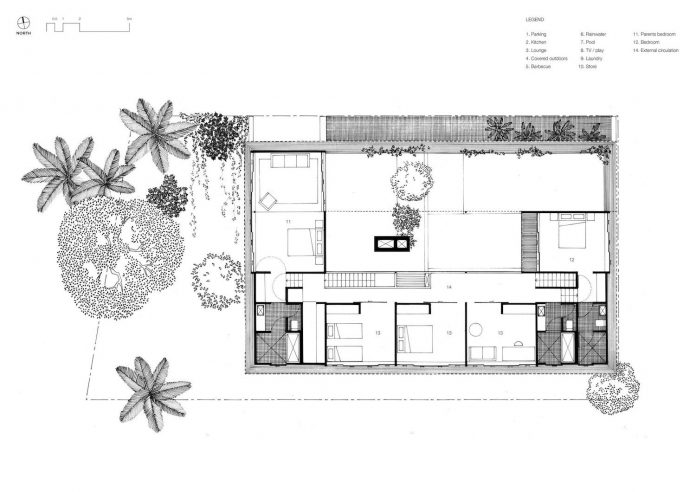
Thank you for reading this article!



